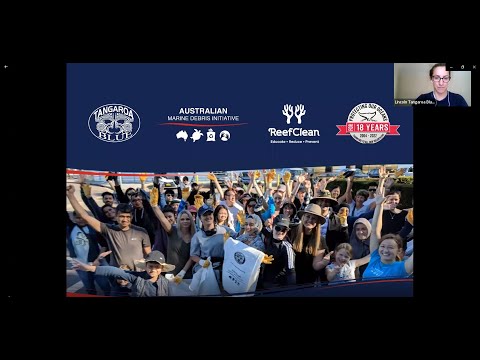The Tangaroa Blue data team recently presented an online training session covering the importance of collecting data on marine debris from clean-ups and monitoring activities. The presentation included how to use the Australian Marine Debris Initiative (AMDI) Database to contribute data from beach and estuary clean-up activities.
The AMDI Database was created to enable volunteers and organisations who were running beach clean-up events to collect data on what they were finding with a consistent methodology. The training highlights the importance of collecting as much information as possible, such as accurate locations, unusual conditions and how to identify items to ensure they are listed in the most suitable category. The database is used to firstly identify what is impacting different sections of the coast, and then to track wherever possible where those items are coming from.

Since the program started in 2004, more than 21 million pieces of marine debris have been removed from the Australian coastline and data on this debris has been collated and inputted into the AMDI Database. Volunteers, organisations and communities from around the country are invited to join forces in the Australian Marine Debris Initiative to find practical solutions in reducing ocean pollution, and to create source reduction plans to stop marine debris from entering our oceans in the first place.
The database has an open access policy enabling scientists, government agencies, communities and organisations to request data on marine debris in Australia for educational and research purposes. The data submitted is always owned by the contributor, however the AMDI Database provides one place for all data to be housed, providing everyone involved in the marine debris issue one place to access and submit data.
The training presentation can now be accessed online and provides the perfect opportunity to learn about how to collect and enter marine debris or to brush up on your database entry and identification skills.







